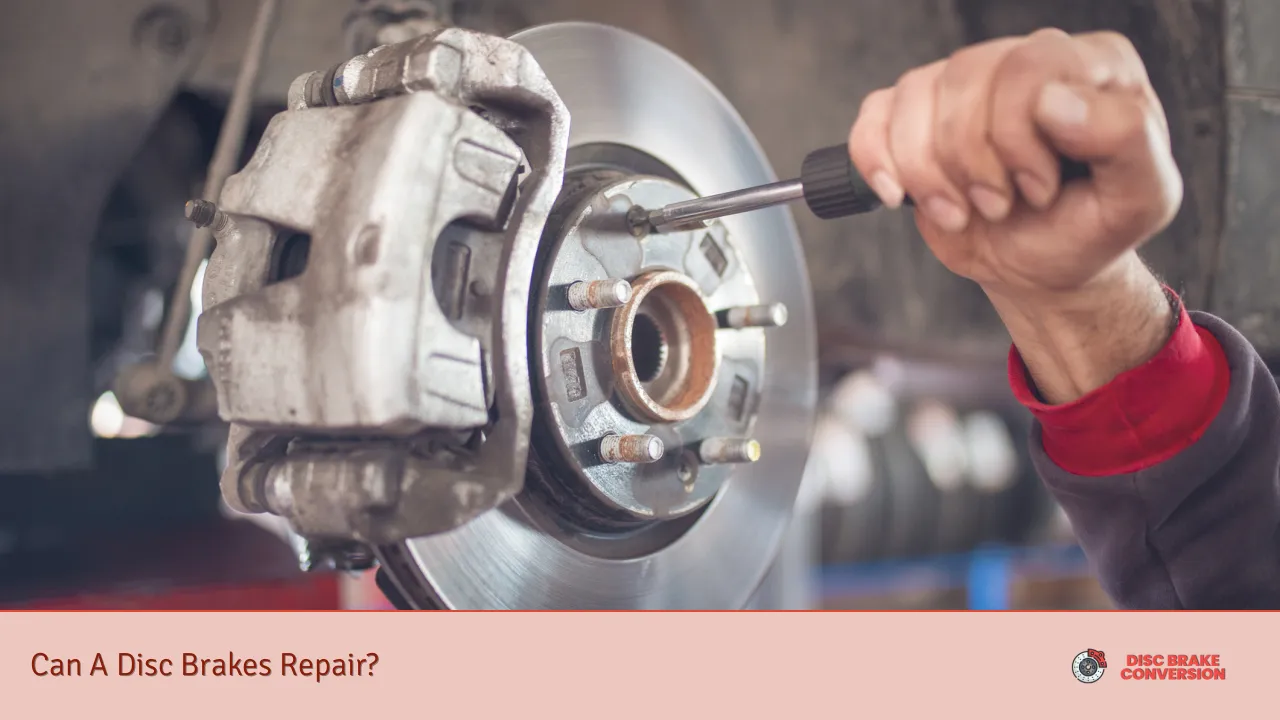Disc brakes are essential components of modern vehicles, providing reliable stopping power and enhanced safety. However, like any mechanical system, they can wear out or become damaged over time. Understanding the repair process for disc brakes is crucial for vehicle owners who want to maintain their braking systems effectively. This article will explore the common issues associated with disc brakes, how to identify when repairs are necessary, and the steps involved in repairing them.
Aspect Details Function Disc brakes provide stopping power by clamping brake pads against a rotating disc. Common Issues Worn pads, warped rotors, and caliper problems.
Disc brakes consist of several key components: the brake rotor (or disc), brake pads, calipers, and the hydraulic system. The rotor is attached to the wheel and rotates with it, while the calipers house the brake pads and apply pressure to them when the brake pedal is pressed. Over time, these components can wear down due to friction and heat generated during braking.
Understanding Common Disc Brake Problems
Disc brakes can encounter a variety of issues that may require repair. Recognizing these problems early can prevent more severe damage and costly repairs.
- Worn Brake Pads: Brake pads are designed to wear down over time. When they become too thin, they can lead to reduced braking performance or damage to the rotors.
- Warped Rotors: Excessive heat can cause rotors to warp, leading to vibrations during braking. This condition can significantly affect vehicle control.
- Caliper Issues: Calipers can seize or fail due to corrosion or lack of lubrication. A malfunctioning caliper may not apply sufficient pressure to the brake pads, compromising braking efficiency.
- Fluid Leaks: Leaks in the hydraulic system can lead to decreased brake fluid levels, resulting in poor braking performance. Regular checks for leaks are essential for maintaining brake function.
Identifying these issues often involves visual inspections and listening for unusual noises while driving. If you notice grinding sounds or vibrations during braking, it’s crucial to have your brakes inspected immediately.
Steps for Repairing Disc Brakes
Repairing disc brakes involves several steps that ensure each component is functioning correctly. Here’s a detailed guide on how to perform these repairs safely and effectively.
Preparing for Repair
Before starting any repair work, gather the necessary tools:
- Socket set
- Wrench set
- Brake cleaner
- New brake pads
- New rotors (if needed)
- Torque wrench
- Jack and jack stands
Ensure your vehicle is parked on a flat surface with the engine off and the parking brake engaged.
Removing the Wheel
1. Loosen the lug nuts on the wheel using a socket wrench.
2. Lift the vehicle using a jack and secure it with jack stands.
3. Remove the lug nuts completely and take off the wheel.
Inspecting Components
Once the wheel is removed:
- Check the brake pads for wear; they should be at least 1/4 inch thick.
- Inspect the rotor for grooves or warping by running your fingers over its surface.
- Look at the calipers for signs of corrosion or damage.
Replacing Brake Pads
1. Locate the caliper bolts and remove them using a wrench.
2. Carefully lift the caliper off the rotor without stretching or damaging the brake line.
3. Remove old brake pads from their slots.
4. Apply a small amount of brake lubricant to the back of new pads (avoid contact with friction surfaces).
5. Install new brake pads in place of old ones.
Replacing Rotors (if necessary)
1. If rotors are worn or warped, remove them by unscrewing any retaining screws.
2. Clean any rust or debris from the hub using a wire brush.
3. Install new rotors onto the hub and secure them as per manufacturer specifications.
Reinstalling Calipers
1. Compress the caliper pistons back into their housing using a C-clamp or similar tool.
2. Place the caliper back over new pads and rotor.
3. Reattach caliper bolts securely using a torque wrench.
Final Steps
1. Reinstall the wheel and hand-tighten lug nuts.
2. Lower the vehicle from jack stands using a jack.
3. Tighten lug nuts in a star pattern to ensure even pressure.
4. Pump the brake pedal several times before driving to ensure proper pad seating.
Maintenance Tips for Disc Brakes
Regular maintenance can extend the life of your disc brakes significantly:
- Check Brake Fluid Levels: Ensure your brake fluid is at optimal levels; low fluid can indicate leaks or worn components.
- Inspect Pads Regularly: Make it a habit to inspect your brake pads every few months or during routine oil changes.
- Avoid Overheating: Try not to ride your brakes during long descents; use engine braking when possible.
- Clean Components: Keep your braking system clean from dirt and debris that can cause premature wear.
By following these maintenance tips, you can help prevent costly repairs down the line.
FAQs About Can A Disc Brakes Repair
- How do I know if my disc brakes need repair?
Signs include grinding noises, vibrations while braking, or warning lights on your dashboard. - Can I replace disc brakes myself?
Yes, if you have basic mechanical skills and tools; however, consult your vehicle’s manual for specific instructions. - What tools do I need for disc brake repair?
A socket set, wrench set, brake cleaner, new pads/rotors, torque wrench, jack, and jack stands are essential. - How often should I check my disc brakes?
It’s advisable to inspect them every few months or during routine maintenance checks. - What happens if I ignore worn disc brakes?
Ineffective braking can lead to accidents; ignoring worn brakes may also cause damage to other components.
In conclusion, understanding how to repair disc brakes is essential for maintaining vehicle safety and performance. By recognizing common problems early and following proper repair procedures, you can ensure that your braking system remains reliable over time. Regular maintenance not only prolongs component life but also enhances overall driving safety.

